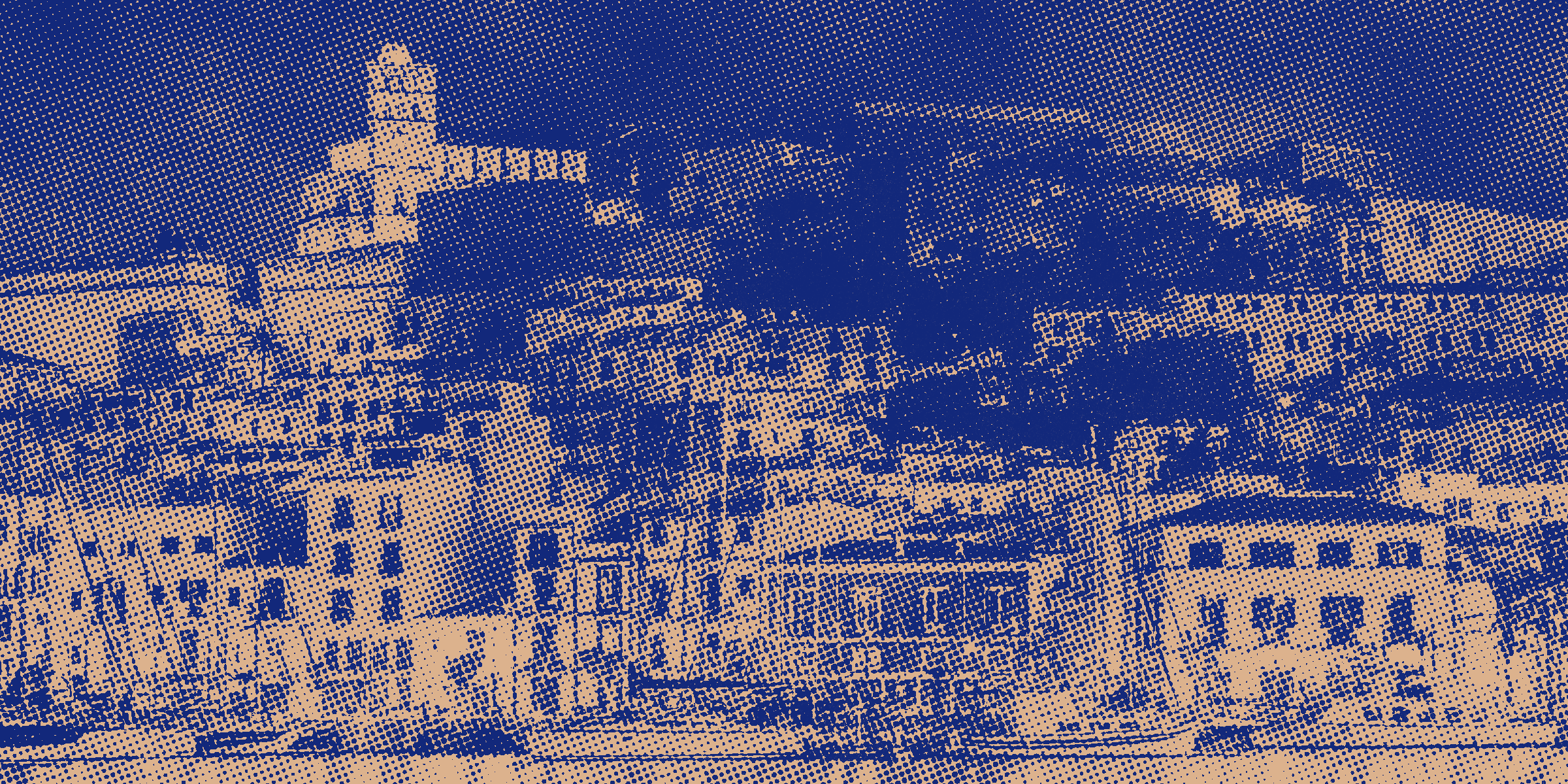How Ibiza became the beating heart of clubbing culture
Ibiza is the hub of so much of the European annual clubbing culture, and provides a seasonal highlight for producers, DJs, and of course, clubbers. This is its story.

Ibiza, a small island nestled in the Mediterranean Sea, is a name that resonates with music lovers worldwide. Known as the 'White Isle,' Ibiza has been a pivotal hub for music and clubbing culture for decades. Its influence has transcended borders, shaping the global music scene and redefining the concept of nightlife. This feature delves into the rich history of Ibiza, exploring its transformation from a tranquil island into the world's dance music capital.
The Early Days
The roots of Ibiza's music scene can be traced back to the post-war era of the 1950s. The island, with its idyllic landscapes and tranquil lifestyle, became a refuge for a diverse group of expatriates. Artists, writers, and bohemians from Europe and America found solace in Ibiza's serene environment, far removed from the political turmoil and societal constraints of their home countries.
This influx of creative minds fostered a vibrant cultural scene on the island. Art galleries, music festivals, and literary events became common, and the island's towns buzzed with a unique blend of local and foreign cultures. The music during this period was eclectic, with folk, jazz, and early forms of rock and roll echoing through the narrow streets of Ibiza's old towns.
The late 60s and early 70s saw the arrival of the hippie movement in Ibiza. Drawn by the island's free-spirited vibe, hippies from around the world flocked to Ibiza, bringing with them a culture of peace, love, and communal living. Music was an integral part of this culture. Drum circles and impromptu jam sessions were a common sight on the island's beaches and in its town squares. These gatherings, often accompanied by dance and other forms of artistic expression, laid the groundwork for the island's future as a dance music hub.
The Birth of Club Culture
The late 70s marked the beginning of a new era in Ibiza's history. The island's first nightclubs, inspired by the discotheques of New York and London, began to appear. Pacha, opened in 1973 by Ricardo Urgell, was one of the first. Located in Ibiza Town, Pacha quickly became a hotspot for locals and tourists alike. The club's open-air dance floor, surrounded by lush gardens, offered a unique party experience that was a far cry from the dark, enclosed spaces of traditional nightclubs.
In 1976, another iconic venue opened its doors: Amnesia. Originally a farmhouse, Amnesia was transformed into a nightclub by its owner, Antonio Escohotado. The club was known for its open-air parties that lasted until dawn, with music that ranged from disco to reggae to early forms of house music. Amnesia's parties, often fueled by the newfound popularity of the drug ecstasy, were legendary, offering a sense of freedom and inclusivity that was emblematic of Ibiza's spirit.
The opening of Ku, now known as Privilege, in the late 70s further solidified Ibiza's status as a clubbing destination. Ku was unlike anything the world had seen before. With its massive swimming pool and garden, the club was more of a party palace than a traditional nightclub. Ku's extravagant parties, complete with performances from drag queens and exotic animals, attracted celebrities and party-goers from around the world.
These early clubs played a crucial role in shaping Ibiza's clubbing culture. They were places of freedom and self-expression, where people from all walks of life could come together to dance and celebrate life. The music played in these clubs, a mix of various genres from around the world, reflected the multicultural nature of the island's population. This eclectic musical style would later evolve into the Balearic Beat, a genre that would become synonymous with Ibiza.
The Balearic Beat
The Balearic Beat, a genre that emerged in the mid-80s, is a testament to Ibiza's multicultural and inclusive spirit. This unique sound was a melting pot of various musical styles, including house, disco, pop, and world music. The term 'Balearic' refers to Ibiza's location in the Balearic Islands, and 'beat' signifies the unifying rhythm that underpins the genre's diverse influences.
The Balearic Beat was pioneered by DJs like Alfredo Fiorito, an Argentine DJ who became a fixture at Amnesia, and Jose Padilla, who was known for his sunset sets at Café del Mar. These DJs, with their eclectic music selection, embodied the spirit of the island. They were not bound by the conventions of any single genre. Instead, they played what they felt was right for the moment, creating a musical journey that mirrored the ebb and flow of a night out in Ibiza.
The Balearic Beat was characterized by its slow to mid-tempo beats, ethereal melodies, and incorporation of real-world sounds, such as ocean waves and bird songs. This sound, combined with the island's stunning natural beauty, created an immersive experience that was both uplifting and introspective. The Balearic Beat became the soundtrack to Ibiza, capturing the island's essence in a way that no other genre could.
The Second Summer of Love
The 'Second Summer of Love' in 1987 was a pivotal moment in Ibiza's history. This event marked the beginning of the island's international recognition as a hub for dance music. The term 'Second Summer of Love' is a nod to the 'Summer of Love' in 1967, a social phenomenon in San Francisco that was characterized by the hippie movement and the rise of psychedelic rock.
In the summer of 1987, a group of British DJs, including Paul Oakenfold, Danny Rampling, Nicky Holloway, and Johnny Walker, visited Ibiza. They were captivated by the island's vibrant nightlife, particularly the eclectic music played by DJs like Alfredo Fiorito. The experience was a revelation for these DJs, who were used to the more rigid and genre-specific club culture in the UK.
Inspired by the Balearic Beat and the inclusive, free-spirited vibe of Ibiza's clubs, these DJs returned to the UK with a mission to recreate the Ibiza experience. They started playing Balearic-style sets in clubs and on pirate radio stations, introducing the UK to the sounds of Ibiza. This sparked a revolution in the British dance music scene, leading to the rise of acid house and rave culture, which took hold in London via club nights like Shoom, and further north in Manchester, where the rise of The Hacienda foreshadowed that the UK would have its own superclubs one day.
The 'Second Summer of Love' had a profound impact on Ibiza as well. The island's reputation as a dance music destination grew exponentially, attracting clubbers and DJs from around the world. This period marked the beginning of Ibiza's global dominance in the clubbing scene, a status that the island maintains to this day.
The Superclub Era
The 90s and early 2000s marked the dawn of the 'Superclub Era' in Ibiza, a period characterized by the rise of large-scale nightclubs that could accommodate thousands of party-goers. These superclubs, with their state-of-the-art sound systems, extravagant light shows, and high-profile DJ residencies, transformed the island's nightlife, taking the clubbing experience to new heights.
Opening in 1989, Space was one of the first superclubs on the island. Located in Playa d'en Bossa, Space was initially known for its daytime parties, a unique concept at the time. The club's terrace, an open-air dance floor that allowed clubbers to dance under the sun, became a symbol of Ibiza's free-spirited clubbing culture. Space's Sunday sessions, helmed by resident DJ Carl Cox, were legendary, attracting clubbers from around the world.
Pacha, which had been a fixture on the island since the 70s, also evolved during this period. The club underwent a series of renovations, expanding its capacity and upgrading its sound and lighting systems. Pacha's 'Flower Power' parties, which celebrated the music and fashion of the 60s and 70s, became a staple of Ibiza's nightlife. The club also hosted residencies from some of the biggest names in dance music, including David Guetta and Swedish House Mafia.
Privilege, formerly known as Ku, was another key player in the Superclub Era. Recognized by the Guinness World Records as the world's largest nightclub, Privilege could accommodate over 10,000 people. The club was known for its spectacular parties, which often featured live performances, acrobats, and elaborate stage designs. Privilege's 'Manumission' parties, which ran from 1994 to 2007, were some of the most famous events in Ibiza, known for their theatricality and hedonistic spirit.
Amnesia, despite its roots in the earlier clubbing era, also rose to prominence during this period. The club's 'Cream' parties, hosted by the UK club brand Cream, were among the most popular events on the island. Amnesia also played a crucial role in the rise of trance music in the late 90s, with DJs like Paul van Dyk and Tiësto regularly playing at the club.
The Superclub Era was a time of excess and spectacle in Ibiza. The island's clubs became global brands, their logos emblazoned on merchandise sold around the world. The superclubs also played a significant role in the commercialization of dance music, with high ticket prices and VIP areas becoming the norm. Despite the criticisms, there's no denying the impact of the Superclub Era on Ibiza's clubbing scene. These clubs, with their larger-than-life parties and superstar DJs, have left an indelible mark on the island's history.
The Present and Future
Today, Ibiza continues to be a trendsetter in the global music scene. While the superclubs still dominate the island's nightlife, there has been a resurgence of smaller, more intimate venues that echo the spirit of the early days. The music has evolved too, with genres like techno, deep house, and more mainstream EDM gaining popularity. Despite the challenges posed by the global pandemic, the island's music and clubbing culture remains resilient. As the world slowly returns to normalcy, Ibiza is poised to reclaim its throne as the world's dance music capital.
From its early days as a bohemian paradise to its transformation into a dance music mecca, Ibiza's journey is a testament to the power of music in bringing people together. The island's rich history and enduring influence on the global music scene make it a fascinating subject of study for music lovers and historians alike. As we look to the future, one thing is certain: Ibiza will continue to dance.
References
- How Ibiza's party really started - BBC Travel
- History of music in Ibiza | Discover Ibiza
- How Ibiza Became a World-renowned Party Destination - Travel
- The History Of Ibiza's Club Scene - Addicted to ibiza
- Explore Four Decades Of Ibiza Club Culture In 100 Classic Tracks
- How we made Space Ibiza | Clubbing | The Guardian
- Ibiza: One Season Too Many? (Documentary) BBC Stories - YouTube
- This is Space Ibiza: 25 Years of Perfection (Documentary) - YouTube
- How Hï Ibiza’s Incredible Production Made It The World's No. 1 Club - YouTube
- The Summer Of Rave 1989 (Full Documentary HQ) - YouTube
- I Was There When House Took Over the World · [Full Documentary] - YouTube


